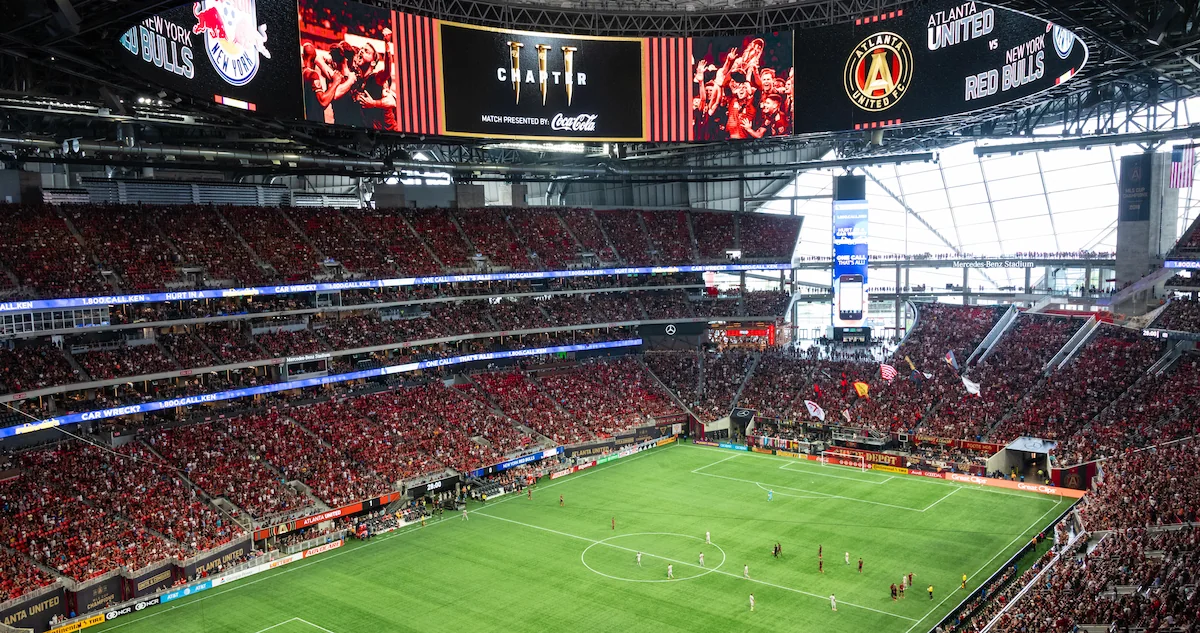Latest Sports Picks, News and Previews

Soccer is a relatively newer sport in America, and they didn’t create a high-level pro league in the United States until the late 20th century. While plenty of other countries had a solid league to mimic that of the English Premier League, Italian Serie A and Spanish La Liga, the most successful European leagues to date.
Although the MLS has only been around for approximately 30 years, the men’s professional soccer league has gained extensive viewership. In this article, we highlight the early beginnings of the U.S. Major League Soccer, when it was founded and how the league has changed throughout MLS history.
Before morphing into what we now know as the MLS, the soccer league in America was the North American Soccer League (NASL). It wasn’t until 1993 that the MLS was founded due to America’s hosting of the 1994 FIFA World Cup, a unique opportunity to generate lots of viewership and revenue. Despite all the costly efforts to start MLS history, the MLS wasn’t a great hit, starting with just 10 teams in 1996 before narrowly losing two by 2002.
Profits were not rolling in like the league originally thought, so it was time for a new approach. After 2002, the MLS began to focus on two critical factors that would change the state of the league for the next few decades; the Designated Player Rule and the construction of soccer-designated stadiums.
Designated players would allow teams to sign big star players, one of the first being David Beckham, where any DP would receive a larger pay chunk than non-DPs. Soccer-only stadiums would allow for more precise scheduling and cheaper field maintenance. These few changes in MLS history would snowball into making the MLS much more popular, and by 2018, the MLS was the eighth-highest-attended pro soccer league in the world.
In modern 21st-century MLS, 29 teams separated into the Eastern and Western conferences, with more teams joining each year. The regular season would start towards the end of February with 34 games, a timing offset with other European leagues so people in America could have their fix of both. Eighteen teams compete in the playoffs from late October to November, where the end goal is to win the MLS Cup.
Out of all pro soccer leagues in the world, the MLS seems to be the only one to continually follow the American tradition of qualifying for the playoffs, no matter how well you did during the regular season. It is also one of the few global leagues to omit relegation and promotion from the league altogether. Eventually, these smart decisions by the MLS led to an average attendance per game of 21,000 by 2022, showing just how popular the league had become.
The United States managed to set up a soccer league similar to the successful European leagues while still maintaining several differences to create a league unique to America. Now, with players like Lionel Messi being signed for massive contract money, TV partners have a great opportunity to make money, like with the MLS AppleTV Season pass.
The hope is by the 2026 World Cup, the United States will get another shot at improving their already successful domestic league, allowing them to bring in more revenue than ever while growing the sport of soccer step by step in America.

Liam has been a major sports fan and soccer player for over a decade, with a particular focus on major top-level soccer leagues, including the EPL, La Liga, Serie A, Bundesliga and MLS. He has written numerous promotional articles for various top sportsbooks and continues to publish historical and factual sports articles covering the NFL, MLS, NHL, MLB, EPL and more.